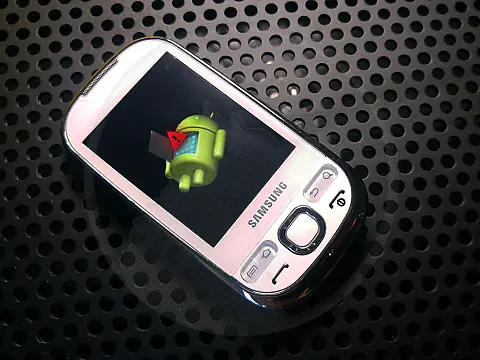Converting Microsoft LifeCam for AstrophotographyGuide for modifying the Microsoft LifeCam series of webcams for use with astronomy which should fit snugly into a standard 1.25" focuser.
While I was shopping around to get my first webcam for getting started with webcam astronomy, I saw the Microsoft LifeCam range of webcams and thought to myself "these look almost perfect for inserting into an eyepiece adaptor". Once delivered I found that it was slightly too small to fit in the focuser and during experiments, the auto-focus feature was problematic due to its inability to focus through the telescope optics.
With this in mind, I started to disassemble the LifeCam in the hopes of disabling the autofocus and making the package more streamlined to fit into an eyepiece adaptor.
held in with a small c-clip which can be popped off with a screwdriver.
The first step for dismantling the LifeCam is to remove the backing plate which is loosely held in with a small clip. Once the backing plate is removed, the insides are revealed. The cable is held in with a small c-clip which can be popped off with a screwdriver.
With the cable lose you can gain access to some more clips inside and you should be able to "pop out" the button on the top with a small, thin screwdriver.
Through the holes under the button, you can insert a small screwdriver to undo the two small screws.
On the front of the webcam, you should remove them from the fascia (the bit with HD written on it). This is loosely glued on and can simply be peeled off. This allows you to unscrew and remove the front cover, behind which are a few other screws to be removed.
You can now pull out the external microphone rubber and disconnect the wire. If you are using this webcam purely for astronomy, you can leave this unplugged as you will not need audio.
The outer casing can now be slid off to reveal the internal components. Once the outer sleeve has been removed the internal chassis can be split in two by removing the screws. The circuit board and camera lens are now accessible.





The autofocus lens can be removed, but it did involve unsoldering the connections on the circuit board. Unless you take great care and have skills in soldering, then this step may be one way. I also removed the bright blue LED which will surely hinder Astro imaging if left connected.
The autofocus lens also contains an infrared filter which will be removed with the lens.
With the autofocus lens, the microphone and external components removed, I reassembled the camera with the CCD moved a lot closer to the front. I then glued it in place before reassembling it. I then inserted the modified camera into an old 1.25" eyepiece extension and taped it in place. The camera now fits perfectly into my telescope focuser or Barlow lenses.

I am now just waiting for a clear night so I can test out my new imaging equipment.


















